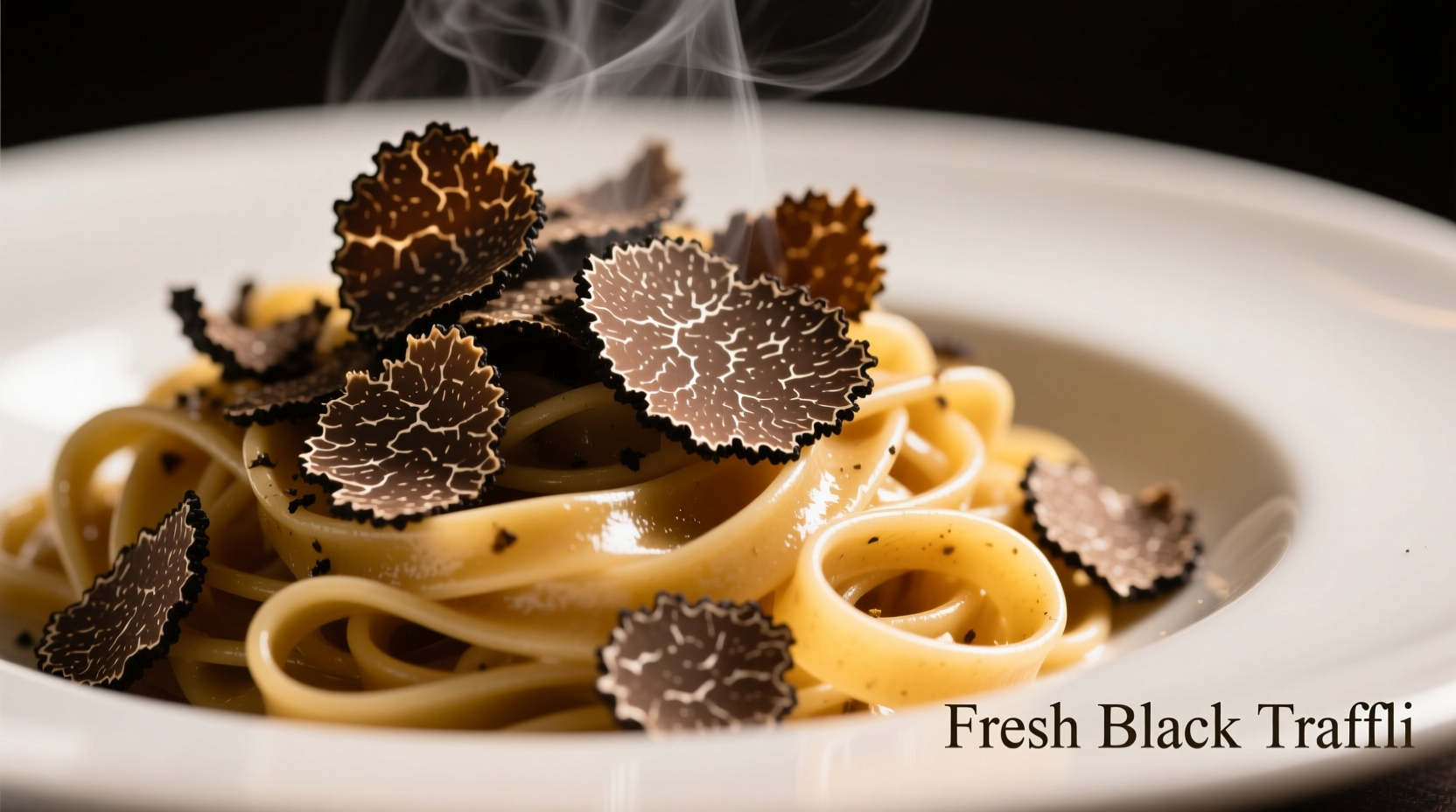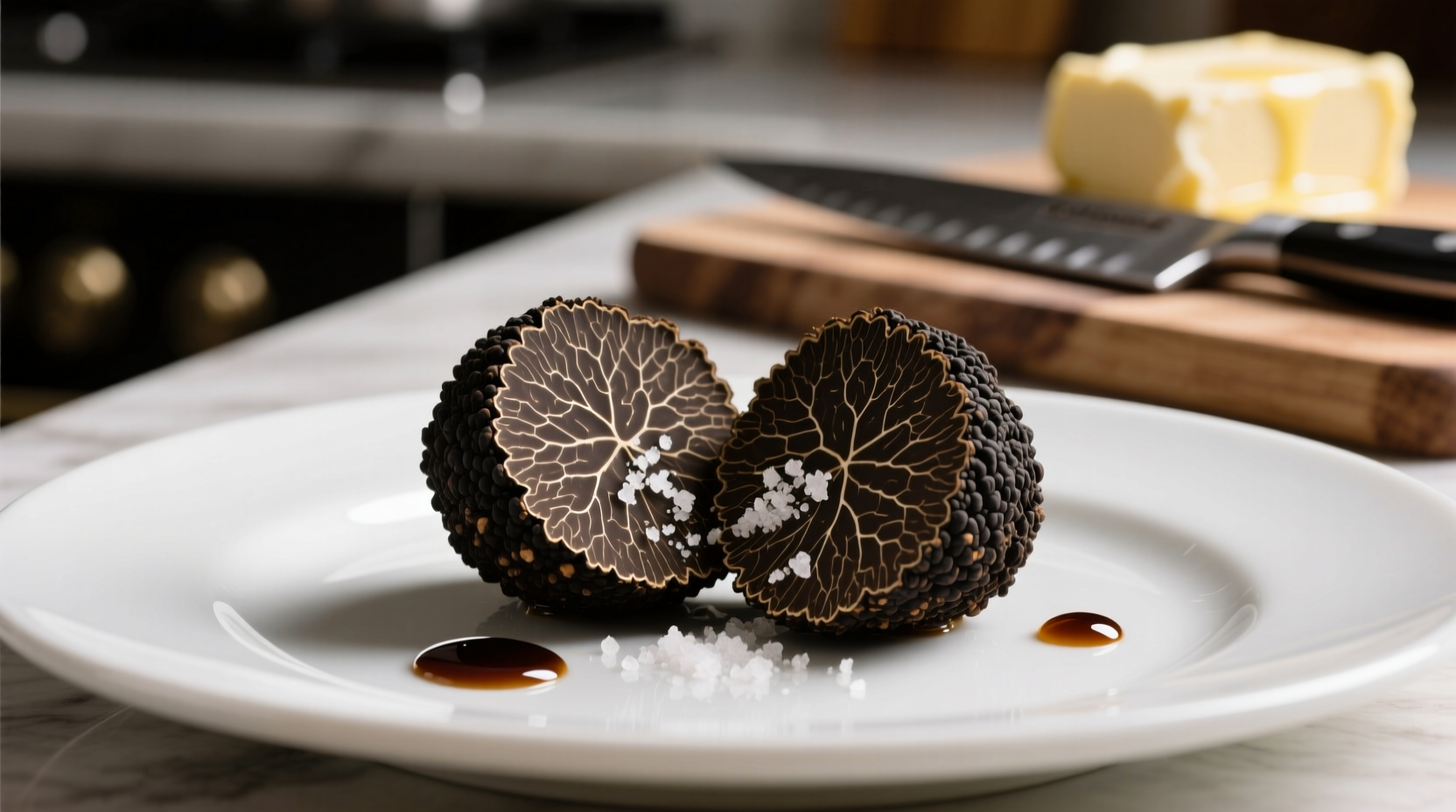If you've ever wondered what does black truffle taste like, you're not alone. This prized fungus commands hundreds of dollars per ounce precisely because of its extraordinary flavor profile that transforms ordinary dishes into culinary masterpieces. Understanding the precise taste characteristics helps you appreciate why chefs worldwide consider black truffles a kitchen essential.
The Complex Flavor Profile of Black Truffles
When you bite into a dish featuring black truffles (Tuber melanosporum), you experience multiple flavor dimensions simultaneously. The initial impression is deeply earthy—like walking through a damp forest after rain. This isn't just poetic description; scientific analysis confirms black truffles contain geosmin, the same compound that creates that distinctive 'petrichor' scent of rain on dry soil.
Beyond the earthiness, you'll detect:
- Umami richness—similar to aged cheeses or mushrooms, but more intense
- Nutty undertones—reminiscent of fresh walnuts or hazelnuts
- Subtle sweetness—with hints of cocoa rather than fruit
- Mineral notes—a distinctive 'iron-like' quality from soil absorption
- Garlic-like pungency—but without the sharpness of actual garlic
Unlike white truffles that hit you with immediate pungency, black truffles reveal their complexity gradually. The flavor evolves as it warms in your mouth, which is why chefs always add them at the end of cooking or directly to warm dishes.
How Soil Composition Shapes Black Truffle Flavor
Not all black truffles taste identical. The terroir where they grow significantly impacts their flavor profile. Research from the University of Turin's Department of Agricultural Sciences shows how soil composition affects taste characteristics:
| Soil Type | Flavor Intensity | Distinctive Notes | Best Harvest Period |
|---|---|---|---|
| Limestone-rich | ★★★★☆ | Pronounced nuttiness, subtle chocolate | December-January |
| Clay-based | ★★★☆☆ | Earthy dominance, mushroom undertones | January-February |
| Sandy loam | ★★☆☆☆ | Milder profile, delicate mineral notes | November-December |
This variation explains why Périgord black truffles from France command premium prices—their limestone-rich soil creates the most complex flavor profile. When sourcing black truffles, understanding these soil composition effects on black truffle taste helps you select the right variety for your culinary application.

Black Truffle vs. Other Truffle Varieties
Many confuse black truffles with other varieties. Here's how their taste profiles differ:
- White truffles (Tuber magnatum): More pungent, with garlicky notes that dominate rather than complement. Their flavor diminishes quickly when heated.
- Summer truffles (Tuber aestivum): Milder earthiness with less complexity; often described as 'black truffle's younger sibling.'
- Burgundy truffles (Tuber uncinatum): Similar to black truffles but with more pronounced nuttiness and less mineral character.
The key difference lies in their volatile compounds. Black truffles contain higher concentrations of 2,4-dithiapentane, which creates their signature musky aroma, while white truffles rely more on dimethyl sulfide for their distinctive scent. This chemical composition directly impacts how to describe black truffle taste accurately.
Maximizing Black Truffle Flavor in Your Cooking
To experience authentic black truffle flavor profile, follow these professional techniques:
Temperature Matters Most
Heat unlocks black truffle's complex compounds. The ideal serving temperature is 122-140°F (50-60°C)—warm enough to release aromas but not hot enough to degrade delicate compounds. This explains why truffle oil (often artificially flavored) fails to capture genuine black truffle essence.
Perfect Pairings for Black Truffle Taste
Certain ingredients enhance rather than compete with black truffle flavor:
- Eggs: The richness complements truffle's earthiness
- Potatoes: Neutral base that carries truffle flavor effectively
- Polenta: Absorbs and distributes flavor evenly
- Simple pastas: Like tajarin or tagliatelle with minimal sauce
Avoid pairing black truffles with strongly flavored ingredients like blue cheese or spicy chilies that overwhelm their delicate profile. The goal is to let the black truffle aroma characteristics shine through.
Common Misconceptions About Black Truffle Taste
Several myths persist about black truffle flavor:
- "Black truffles taste like chocolate": While some detect cocoa notes, they don't actually taste like chocolate. This confusion comes from shared aroma compounds (pyrazines) found in both.
- "More truffle means better flavor": Overuse creates overwhelming earthiness. Professional chefs use just 5-10 grams per serving.
- "Truffle oil contains real truffles": Most commercial truffle oils use synthetic 2,4-dithiapentane without any actual truffle content.
Understanding these distinctions helps you appreciate the genuine what foods pair well with black truffles experience rather than artificial imitations.
Preserving Black Truffle Flavor
Proper storage maintains flavor integrity. The University of Bologna's Food Science Department recommends:
- Store in airtight container with uncooked rice (absorbs excess moisture)
- Change rice daily to prevent mold
- Never refrigerate directly—wrap in paper towel first
- Use within 5-7 days for peak flavor
For longer storage, some chefs preserve black truffles in dry sherry or olive oil, though this alters the flavor profile. Freezing diminishes aroma compounds significantly—always use fresh when possible to experience authentic why black truffles taste so unique.
Professional Chef Techniques for Black Truffle
Master chefs employ specific methods to maximize flavor:
- Shaving thickness: 0.3-0.5mm thickness releases optimal aroma without overwhelming dishes
- Timing: Add to warm (not hot) dishes just before serving
- Infusion: Bury whole truffle in rice or eggs for 24-48 hours to transfer flavor
- Minimal handling: Use ceramic or plastic tools—metal alters flavor chemistry
These techniques ensure you experience the full complexity of how to properly store black truffles to preserve flavor without degradation.
Do black truffles taste different when cooked versus raw?
Yes, black truffles develop more complex flavors when gently warmed. Raw truffles have a more subtle earthiness, while heating to 122-140°F (50-60°C) releases their full aromatic compounds, enhancing nutty and umami notes without burning delicate volatile oils.
Why do some people say black truffles taste like garlic?
Black truffles contain sulfur compounds similar to garlic, but in much lower concentrations. This creates a subtle savory note rather than actual garlic flavor. The perception varies based on individual sensitivity to these compounds and the truffle's ripeness.
How can I tell if a black truffle has gone bad?
Fresh black truffles should have a firm texture and complex earthy aroma. Signs of spoilage include soft spots, dark liquid oozing, ammonia-like smell, or white mold growth. Properly stored truffles maintain quality for 5-7 days; beyond that, flavor deteriorates significantly.
Are there regional differences in black truffle flavor?
Yes, Périgord truffles from France have the most complex profile with pronounced nuttiness, while Italian black truffles tend earthier. Soil composition, climate, and host trees create subtle but noticeable flavor variations between regions, similar to wine terroir.











 浙公网安备
33010002000092号
浙公网安备
33010002000092号 浙B2-20120091-4
浙B2-20120091-4